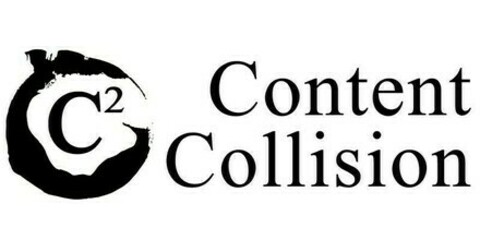How 37signals' founders build a loyal audience without the hype
Discover how to build a loyal audience with straightforward advice from 37signals' founders.

Content marketing strategies vary, and within this diversity, authenticity is often overlooked. Content that lacks authenticity may not attract an audience and could lead to distrust in the product.
Jason Fried and David Heinemeier Hansson, the co-founders of 37signals, share their perspectives on authentically engaging an audience.
As the creators of 37signals, a company known for its software products, Jason and David also have a strong online presence. Active on Twitter since 2008, David has over 400,000 followers, and Jason has more than 100,000. They emphasize that the number of followers is not their primary concern.
"I remember when we launched Basecamp, we had 5,000 followers on our blogs, 5,000. That’s nothing by today’s standards, 5,000 followers is very little. Yet that was enough to bootstrap the business," they recall.
In the "Build an Audience" episode of their podcast, REWORK, they discuss audience-building intricacies. They outline steps they believe are crucial for establishing a genuine connection with an audience, which can enhance marketing efforts.
To build an audience, first, build a connection by giving without expecting a direct return
To cultivate an audience, a brand must focus on connecting with its audience. This connection involves sharing expertise without expecting something in return. "So I think it has to be rooted in sharing and giving with no expectation, and then you can do some special things with that group of people that you couldn’t do otherwise."
For example, when a brand consistently offers content that demonstrates its authority without asking for anything—not emails, sign-ups, or social media interactions—the audience is naturally drawn to the brand. This connection is authentic: the brand shares, and the audience listens.
"And what’s nice about that is if you primarily are sharing and giving back with no expectation of return, then occasionally you can throw something in that is asking for something like a new product launch or a new feature, or a new book," Jason explains.
On the other hand, if a brand constantly asks for something, engagement may decline, and the audience's willingness to listen may decrease. "An audience is someone who comes to see your show. That’s an audience," they explain.
Competence and the ability to convey it in content are key to forming a connection
David emphasizes the importance for brands to demonstrate competence and effectively communicate it through their content. He refers to "skin in the game" as a brand's investment in their expertise, showing a deep commitment to the subject matter beyond marketing. "It’s showing that they are competent at what they’re building, they’re showing that they have skin in the game."
They cite an example of a company that produced a video showing their bag being torn to demonstrate its durability. This method allows the audience to see the product's quality firsthand.
This includes sharing the brand’s progress in creating products, services, or features. Jason notes that sharing differs from merely scheduling content. "This is a much simpler approach. Now what I’m doing there is I’m actually talking about the product, but I’m really sharing more than what I’m asking for. I’m saying, here’s how we think about issues," he says.
"Once those elements are present, that’s when you can create that connection that forms an audience that isn’t just transactional," David adds.
Have an actual conversation in response to content
"We engage, we respond, we argue, we defend, we promote, but we’re there because we’re actually having a conversation," Jason says. This presence contrasts with the set-and-forget method of scheduled posts that many brands use.
Jason criticizes the practice of scheduling posts, which can lead to one-sided conversations. "That’s what happens when you schedule posts. You put something out there, people respond, and then you’re not there," he says. This method falls short of building a true community or sparking genuine conversation, which are essential for audience building.
The co-founders of 37signals advocate for direct communication. Jason points out that both he and David are accessible and involved. "You can reach both David and I, we own the company. We’ve been here and you can talk to us," he states, emphasizing the importance of being reachable and responsive.
Entrepreneurs can start building an audience through byproduct content
Jason echoes Gary Vaynerchuk's philosophy of documenting rather than creating. Entrepreneurs can generate authentic and engaging content by documenting daily business decisions and actions. "You don’t need to create, you just need to document," Jason emphasizes, advocating for simplicity and action over planning and perfection.
David encourages entrepreneurs to explore the details of their craft. "Everything is interesting if you scratch hard enough," he says, suggesting that any business aspect can be fascinating. He shares an anecdote about a bag maker who educated him on the intricacies of his trade, which intrigued David and made him a potential customer.
The co-founders of 37signals emphasize starting simply and improving over time. Jason advises against letting the pursuit of perfection hinder the first step. "Just go. That’s how you get started," he insists, suggesting that entrepreneurs refine their approach as they progress, beginning with what they have and improving incrementally.
Content Collision provides B2B content marketing services and performance-based digital PR services for tech startups in APAC and beyond. Book a quick call with our team to learn more.


